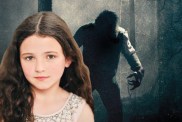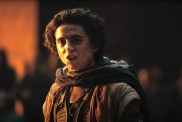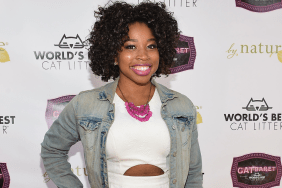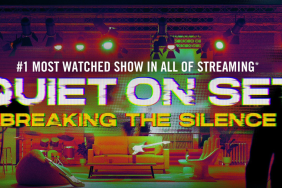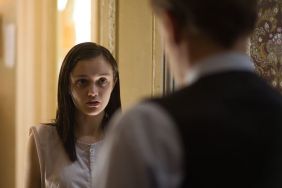
Starring Jared Harris, Sam Claflin and Erin Richards, the supernatural thriller is the Hammer follow-up to its record-breaking box-office hit The Woman in Black. It continues the welcome revival of the veteran House of Horror brand name under the auspices of Hammer CEO Simon Oakes which has just completed The Woman in Black: Angel of Death sequel and recently announced remakes of The Abominable Snowman and Gaslight.
Chosen to direct what producer Ben Holden calls “The Asphyx filtered through Flatliners” was John Pogue, writer of The Skulls (2000), Rollerball (2002), Ghost Ship (2002) and director of Quarantine 2: Terminal (2011). Holden continues, “The latter was a well-executed movie proving that John could nail the genre. It’s not a given that every director can deliver the thrills and scares required by such a property. Not just on the mechanical jump level, but also on the more elaborate suspenseful basis. His past writing credits showed he was great on character and when we had our first meeting with him it was clear he had strong opinions on all aspects of the project, how it should be shot, designed and how the characters should interact.”
“My game plan as of five years ago was always to become a fully-fledged director,” the Washington DC-born John Pogue told me during the shoot on the Oxford University location back in June 2012. “I’d done the writing bit beginning with U.S. Marshalls (1998) and needed the buck to stop somewhere and that was with Quarantine 2. From that I found out I enjoyed working with actors and more to the point loved being in control of everything. And I love the horror genre because it’s the one area in film that continues to recreate itself in vibrant ways. I’m excited by the minimalistic horror being done at the moment and felt The Quiet Ones could key into this scary space while moving it into other exciting uncanny directions.”
Once completely on board The Quiet Ones, Pogue lost no time in putting his own mark on the project. “I rewrote the script precisely at the angle for me as the director,” he states. “I had the privilege of working on something that was already interesting and scary, but I felt it needed a point of view the audience could identify with. That turned out to be Sam Claflin’s character recording the experiment on his 16mm camera for posterity. Initially he’s ethically and morally neutral, but then he’s sucked in by events and a growing sense of unease.”
He continues, “Jared Harris’ character, Professor Coupland, was more of a Frankenstein figure in the original draft, larger than life and less credible. So, I wanted to work on that arc from a scientific perspective. The movie is about this driven man who has devoted his entire life to logically proving demonic possession is a psychological issue. Then there’s the documentarian clinging to the idea that possession is something to do with the occult. It’s the conflict between these two opposing views – religious superstition vs. hard scientific fact – that fuels the edgy drama of The Quiet Ones.”

He adds, “Being a period movie set in the early 1970s, I felt the contemporary technical obscurities and phraseology needed to be explained as a way into this world and the movie. The story was always located in England so lots of research had already been done into those vital areas. Yes, I did have to assimilate the culture of the times, and ensure the British viewpoint was maintained. Not such a hard task actually, seeing the crew were mainly British and mentored me well! Yet I did have to find a credible way of presenting Professor Coupland talking about electric shock therapy, ‘The Stanford Prison Experiment’ and the Enfield Poltergeist without clogging the script up with unnecessary exposition.”
Essential to Pogue’s vision of the piece was a unique look and to that end he chose Hungarian-born Mátyás Erdély as his cinematographer. “I’m a huge fan of his work – Tender Son: The Frankenstein Project (2010), Miss Bala (2011) and his short film Before Dawn (2005) contains the most amazing tracking shot I’ve ever witnessed. I wanted someone who thought out of the box and would push the visual envelope. There were many people who could have just taken a straight down the middle route, but Mátyás has given it an epic scale that fits in with the Hammer pedigree and their global ambitions. We’re both outsiders in the UK and being out of our familiar environments was a positive bonus. His approach was long takes covering many elements for a fluidity that wouldn’t cut into the dramatic depth yet set the pace to determine the chilling atmosphere. He also gave Sam Claflin a camera to see how he would handle it as the documentary filmmaker. The mistakes Sam made were then copied into the main frame so he would feel more a part of his character. Mainly Mátyás didn’t overdo the horror, if something is shown as supernatural, the reality with which it’s dealt with is the overriding factor for a more organic feel.”
Pogue was also thrilled to work with Jared Harris, star of Mad Men and The Man from U.N.C.L.E. He continues, “I’ve followed Jared’s work for years and his casting was an absolute no-brainer as he’s unbelievably charismatic and smart. He more than met my expectations playing Coupland as a child of the Swinging Sixties, ideologically looking to the East rather than the West for enlightenment and very much aligned to the French intellectual movement regarding socialist thinking. I’m a collaborative director and if you can find that trait in actors you get more than just a puppet show. Jared contributed in every way from blocking to style input which is exactly what you need doing such super-challenging work on a tight budget.”
It was while Pogue was working on the script that The Woman in Black became one of the highest grossing independent horror films of all time. “So The Quiet Ones suddenly gained in importance,” he remarks. “I didn’t feel any extra pressure on me really, but there was an assumption that it would now have to follow in its footsteps of expectation, even though it was a given the Hammer brand had to be protected. It was left unsaid, and I didn’t mind, as the movie will speak for itself. It’s a risky project for sure because it doesn’t follow in any cookie cutter tradition. But that’s why we all wanted to make it as it’s a different movie altogether from what’s out there while being thematically audacious and intellectually rich.”
[springboard type=”video” id=”900443″ player=”sh007″ width=”580″ height=”362″ ]
The Quiet Ones
-
The Quiet Ones

-
The Quiet Ones

-
The Quiet Ones

-
The Quiet Ones

-
The Quiet Ones

-
The Quiet Ones

-
The Quiet Ones

-
The Quiet Ones

-
The Quiet Ones

U.S. one-seet
-
The Quiet Ones

-
The Quiet Ones


